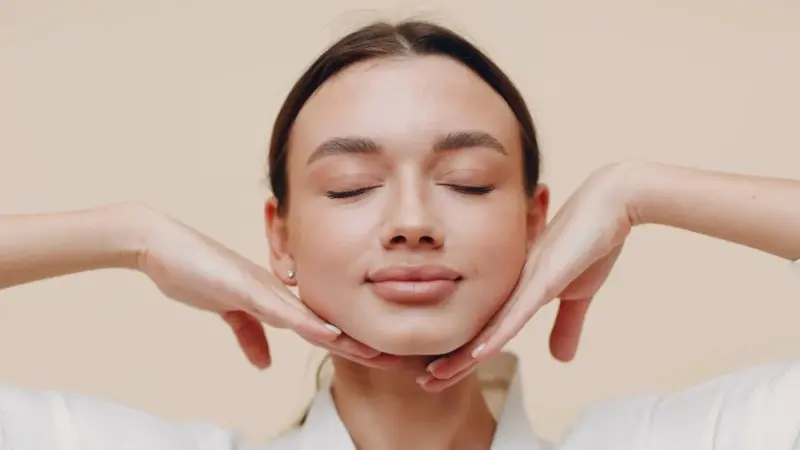
Unveiling the Wonders of Face Yoga: A Comprehensive Guide
In the pursuit of vibrant, youthful skin, many individuals have explored a variety of skincare products and even resorted to invasive cosmetic procedures. However, a holistic approach to natural skincare has emerged, challenging these methods. Face yoga, a rising trend, harnesses the power of facial exercises to rejuvenate and revitalize the skin. This comprehensive guide delves into the origins, benefits, techniques, and scientific evidence behind face yoga, highlighting its effectiveness as a holistic skincare practice.
Understanding Face Yoga
Face yoga involves a series of targeted exercises that engage and stimulate the approximately 57 muscles found in the face and neck. By enhancing blood circulation, increasing oxygen supply to the skin cells, relieving tension, and promoting collagen and elastin production, this practice aims to restore a youthful and radiant appearance. Similar to traditional yoga, face yoga emphasizes the interconnection between mind, body, and spirit, often incorporating deep, meditative breathing alongside facial exercises.
History and Origins
While the concept of facial exercises dates back centuries, the term “face yoga” gained prominence only in the 21st century. Ancient Chinese and Indian cultures incorporated facial massage techniques to enhance beauty and overall well-being. Annette Sasaki-Scanlon is often recognized as an early pioneer who began developing facial exercises in the 1970s. However, it was Fumiko Takatsu, a Japanese yoga teacher, who propelled face yoga into the global spotlight during the early 2000s. Today, face yoga has amassed a significant following, attracting practitioners from diverse age groups and backgrounds.
Scientific Foundation and Benefits
Scientific studies have started to shed light on the efficacy of face yoga. A 2018 study conducted by Northwestern University in the US revealed that regular facial exercises led to fuller upper and lower cheeks, resulting in participants appearing approximately three years younger on average.
Beyond its aesthetic enhancements, face yoga offers a range of health benefits, including:
1. Improved blood circulation
Facial exercises enhance blood flow, nourishing cells with vital oxygen and nutrients. This nourishment helps promote a radiant complexion and combats dullness.
2. Stimulation of collagen and elastin production
Through targeted muscle workouts, face yoga may stimulate the production of collagen and elastin, two essential proteins for skin elasticity and suppleness.
3. Tension relief
Face yoga exercises can alleviate tension accumulated in the facial muscles, reducing the likelihood of headaches, eye strain, and jaw discomfort caused by stress.
4. Mood enhancement
Like any form of exercise, face yoga triggers the release of endorphins, the “feel-good” hormones. This natural mood boost promotes relaxation and an overall sense of well-being.
Face Yoga Techniques
To fully experience the benefits of face yoga, consistent practice is key. Start your journey with the following exercises:
1. Cheek Lifter
Open your mouth into a relaxed ‘O’ shape, fold your lower lip and the corners of your lips inward, and smile, raising the corners of your mouth. Place your fingers on the top part of your cheeks and gently lift them towards your eyes. Release and repeat this exercise.
2. The ‘V’
Position both middle fingers together at the inner corner of your eyebrows. Then, using your index fingers, apply gentle pressure to the outer corners of your eyebrows. Look towards the ceiling and raise your lower eyelids, creating a firm squint. Maintain this position briefly before releasing the tension. Conclude the exercise by tightly shutting your eyes for ten seconds.
3. The ‘Smiling Fish Face’
Create a “fish face” by sucking in your cheeks and lips, forming a pout. While maintaining this expression, attempt to smile as genuinely as possible. Hold the pose for five seconds, and then relax. Repeat this exercise multiple times to optimize its effects.
4. The ‘Lion Face’
Take a deep breath and clench your fists. Upon exhaling, stick out your tongue, roll your eyes, and open your hands wide. This exercise helps release tension from all facial muscles.
Conclusion
Face yoga presents a natural and non-invasive alternative for those seeking to maintain youthful skin and improve overall well-being. While further scientific research is needed to substantiate its long-term effects, the undeniable benefits and joy derived from this practice have captivated many enthusiasts. Just as with traditional yoga or any form of exercise, consistency plays a vital role in face yoga. So why not embark on this journey and discover the potential it holds for enhancing your skincare routine and holistic well-being?

